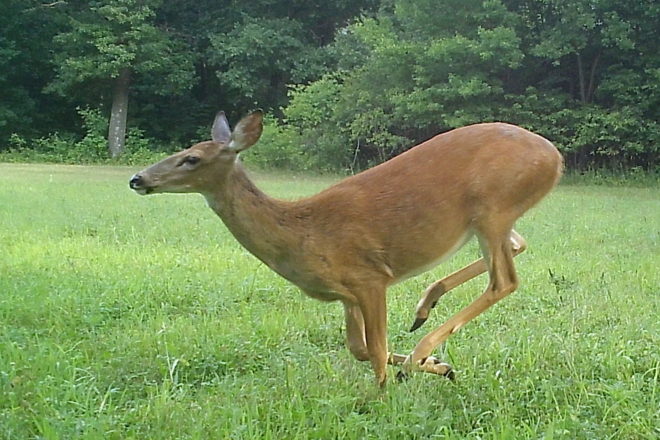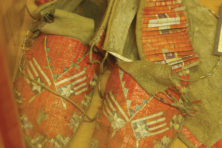Wild Things: Tribes Get New Netting Agreement
- Share
- Tweet
- Pin
- Share

Sport anglers object; coalition expected to appeal
by KEVIN NAZE, [email protected], Peninsula Pulse contributor
While Wisconsin commercial anglers continue to push for a small, experimental “study fishery” to scoop lake trout from Lake Michigan, a federal judge has approved an agreement that will allow Indigenous Michigan tribes to use gill nets in more places.
Last week, U.S. District Judge Paul Maloney approved an agreement among four tribes, federal regulators and the state of Michigan that will govern commercial fishing and sportfishing in parts of the Great Lakes for the next 24 years.
The agreement replaces a pact called a consent decree, originally made in 1985 and updated in 2000. It covers parts of lakes Michigan, Huron and Superior, and it extends the longstanding rights of the tribes under a regulatory framework that has been under negotiation since it expired three years ago.
The deal was reached in December, but one tribe refused to join, arguing that Michigan has no authority over its fishing operations.
Judge Maloney overruled that objection, as well as objections from the Coalition to Protect Michigan Resources (CPMR), which sought to intervene over concerns that expanded gill netting could harm the sport fishery. The coalition is expected to appeal the ruling.
The new agreement covers areas that fall within Michigan waters in which the tribes reserve fishing rights according to an 1836 treaty. As with past versions, it sets open and closed areas for commercial netting, catch limits and gear.
Michigan spent millions paying tribes to transition to trap nets under the 2000 pact, but Maloney wrote that because catch ceilings keep populations from dropping too low, the type of net that’s used is irrelevant.
The Michigan Department of Natural Resources banned gill netting in Michigan during the 1970s after research concluded that gill nets are nonselective and could harm some fish populations. The tribes asserted their treaty right to fish with gill nets, and after several court cases and injunctions, the first Great Lakes consent decree was adopted in 1985.
Sport anglers have objected to expanded gill netting since the idea leaked out. CPMR filed its objections in January, saying the proposed decree will have disastrous impacts on the resource in general and recreational fisheries in many areas, including Grand Traverse Bay and Big Bay de Noc. It could unravel a decade’s worth of progress in rehabilitating lake trout, the group said, because millions of new feet of gill-net effort could be fished in popular recreational fishing zones that haven’t had them for 40 years.
First Hunts Are Open
Friday was opening day of the early goose, teal and mourning dove hunts. It’s a good opportunity for waterfowl enthusiasts especially to take advantage of liberal bag limits for locally raised birds.
Black-bear hunters who drew a tag can begin Wednesday using bait in Zones C, E and F, or with trailing hounds in Zones A, B and D. Those using bait in Zones A, B and D can begin hunting Sept. 13.
The archery and crossbow opener is set for Sept. 16. That’s also opening day for the wild turkey, gray and fox squirrel, Northern Zone cottontail rabbit, and Zone A ruffed grouse seasons.
The youth waterfowl hunt weekend is Sept. 16-17; the Northern Zone duck season opener is Sept. 23; the Southern Zone duck season begins Sept. 30; and the Open Water Zone opens Oct. 14. This year’s youth gun deer hunt is Oct. 7-8, and the pheasant season opens Oct. 14 at 9 am.
See a complete list of hunting opportunities at dnr.wisconsin.gov/topic/hunt/dates, and review the 2023-24 hunting regulations at dnr.wisconsin.gov/topic/hunt/regulations.
Safe Hunting
Bow and crossbow deer hunters should inspect tree stands to make sure they’re secure and in good working order. Attach stands to trees that are large enough and that do not have dead limbs that could fall or break, causing an injury or fall.
When ascending or descending, maintain three points of contact – two feet and one hand, or two hands and one foot – and use a haul line to raise and lower your hunting equipment. Also consider using a lifeline and full-body harness when climbing or descending. Not sure how they work? Many online tutorials are available.
Whether scouting or hunting, tell someone where you’ll be and when you expect to return. Carry a cell phone to call for help, as well as a whistle in an accessible pocket.
Hunters born on or after Jan. 1, 1973, must have hunter-education certification unless they’re participating under the Mentored Hunting Law. Check out a list of upcoming hunting and outdoor safety classes at dnr.wisconsin.gov/Education/OutdoorSkills/HuntingSafety.
Steady Water Levels
Lake Michigan water levels have been steady during the past month, but they’re expected to drop about two inches by late September.
As of Aug. 25, water levels were down 28 inches from the monthly record set in August 2020. Lake levels were still five inches above the 100-year average, and 37 inches above the record monthly low from 1964.
Whitetails Banquet
The Kewaunee County chapter of Whitetails Unlimited is holding its annual fundraising banquet Tuesday, Oct. 10, at the Rendezvous Banquet Hall near Luxemburg, where attendees can enjoy a dinner, auction, raffles and door prizes. Several packages are available. Learn more at whitetailsunlimited.com/events/banquets.



